BALLET(from French balleto and Latin ballo - I dance), has two meanings: 1. A type of theatrical and musical art in which artistic image created using choreography, dance and plastic language. 2. Ballet performance.
The emergence of ballet
Ballet, the highest level of choreography (from the Greek choreia - dancing and grapho - writing), in which the art of dance rises to the level of musical stage performance, arose as a courtly aristocratic art much later than dance, in the 15-16th centuries. The term "ballet" appeared in Renaissance Italy in the 16th century and meant not a performance, but a dance episode. Ballet is a synthetic art in which ballet, the main expressive means of ballet, is closely connected with music, with a dramatic basis - libretto, with scenography, with the work of a costume designer, lighting designer, etc. The ballet is diverse: plot - classic narrative multi-act ballet, drama ballet; plotless - symphony ballet, mood ballet, miniature. By genre, ballet can be comic, heroic, folklore. 20th century brought new forms to ballet: jazz ballet, modern ballet.
Simons adopted the middle movement of Mozart's "very personal" piano concerto. 20 as inspiration for his choreography. Dijkstra's main goal was to capture the intense concentration and exhaustion of the dancers. Returning to the Netherlands, along with his dancing career with the Dutch National Ballet, he created various successful works, including the Dutch National Ballet Canta and a children's production.
Small big chest. Nine contrasting miniatures - from sharp to smooth and from passionate to melancholic - together form a unity that is as natural as it is surprising. Laura Rosillo Cristiano Carrier Emily Tassinari Joseph Massarelli Pascal Paerel Daniel Silva Antonina Chirpanlieva Giovanni Principe. Nadine Druin Anatole Babenko Jingjing Mao Skyler Martin.
Ballet in the Renaissance, Baroque and Classicism.
The process of theatricalization of dance took place especially intensively in Italy, where already in the 14th-15th centuries. The first dance masters appeared and ballroom and court dances were formed on the basis of folk dance. In Spain, the plot dance scene was called a sea dance (Moorish dance), in England - a mask . In the mid-16th - early 17th centuries. a figured, pictorial dance arose, organized according to the type of composition geometric shapes(ballo-figurato). Famous "Turkish Women's Ballet" performed in 1615 at the court of the Medici Dukes in Florence. Mythological and allegorical characters take part in the visual dance. From the beginning of the 16th century. equestrian ballets are known, in which riders pranced on horses to music, singing and recitation ( "Tournament of the Winds", 1608; "Battle of Beauty", 1616 Florence). The origins of equestrian ballet lead to the knightly tournaments of the Middle Ages.
Wen Ting Guan - Josef Varga Susanna Kaich - Yang Gyu Choi. Christa Ettlinger - Giovanni Principe Nancy Boorer - Cristiano Princess Hannah de Klein - Nathan Cheney. Laura Rosillo - Daniel Montero Real. Dutch Ballet Orchestra conducted by Matthew Rowe. Six other couples join them in a dazzling finale. In her ballet, Dawson wants to express both the ethereal aspect of the story and its loneliness.
A special role in this will be played by sets by German designer Eno Henze, as well as music written specifically for the ballet by Polish composer Szymon Brzoska. The leading Russian choreographer allows the color of the two couples in the adagio and scherzo from Tchaikovsky's work of the same name in his own way. He also inhaled new life into classical ballet with an exceptionally inventive and expressive use of academic technique.
First ballet performance , who united music, words, and pantomime, « Circe and the Nymphs" or "The Queen's Comedy Ballet" , was placed in 1581 at court Catherine de' Medici(Paris) Italian choreographer Baltazarini di Belgioioso nicknamed Beauzhuayer - “cheerful handsome man”, an excellent violinist and choreographer, who arrived at the court of Catherine de Medici with an orchestra of Italian violinists. On the occasion of the marriage of the Duke of Joyeuse to Margarita of Lorraine, the Medici commissioned Baltazarini to organize a grand celebration. The performance lasted five hours, from 10 pm to 3 am. “...On the stage of one of the halls of the Bourbon Palace, Circe doped Odysseus’s companions with a magic potion. Having turned them into animals, the treacherous goddess forcibly holds the travelers on her island. The gods decide to break the witchcraft spell. They declare war on Circe. Good wins." This is the plot of the first real ballet performance in history, combining poetry and music within the framework of a dramatically holistic script.
Pastor's ballet is about emotions that can be caused by space or lack of space. In a beautiful set of ever-changing spots of light, he combines virtuoso ensemble sections with an impressive display of solid physicality and an elegant, sensual duet.
The list may always change! Wen Ting Guan Arthur Shesterikov. Aya Okumura Clemens Fröhlich Antonina Chirpanlieva Cristiano Principato. Yuanyuan Zhang Thomas van Damme Hannah de Klein Giovanni Prince Jessica Xuan Chanquito van Hove Nadine Droyne Daniel Silva. Sasha Mukhamedov - Daniel Camargo Qian Liu - Young Gyu Choi.
Since then, the genre of court ballet (masquerades, pastorals, dance divertissements and interludes) began to develop in France. Ballet 16th century was a magnificent spectacle in the Baroque style with the performance of ceremonial Spanish dances - pavane, sarabande. During the time of Louis XIV, court ballet performances reached their highest splendor and included stage effects that gave the spectacle the character of an extravaganza. Louis XIV himself was no stranger to the muse of dance; in 1653 he acted as the Sun in "Ballet of the Night" from then on he was called the "Sun King". Composer J.B. danced in the same ballet. Lully, who began his career as a dancer.
Emanuela Merjanova Clemens Fröhlich. Naira Agvanyan Yuanyuan Zhang Aya Okumura Erica Horwood. Dutch Ballet Orchestra conducted by Philip Ellis. The Dutch Ballet Orchestra combines music and dance with a magical experience: from classical ballet to contemporary dance, from music education to talent development. The working method is unique in the Netherlands. The Dutch Ballet Orchestra, with Matthew Rowe as chief conductor, consists of a regular core of 45 musicians, supported when necessary by highly qualified guests.
It began to turn into a ballet when it began to be performed according to certain rules. IN was the first to formulate them choreographer Pierre Beauchamp(1637-1705), who worked with Lully and headed the French Academy of Dance (the future Paris Opera House) in 1661. He's wrote down the canons of a noble style of dance, which was based on the principle of eversion of the legs(en dehors). This situation gave human body opportunity to move freely different sides. He divided all the dancer’s movements into groups: squats (plie), jumps (skips, entrechat, cabriole, jete , ability to hover while jumping - elevation), rotations (pirouettes, fouettés), body positions (attitudes, arabesques). The execution of these movements was carried out on the basis of five positions of the legs and three positions of the arms (port de bras). All classical dance steps are derived from these positions of the legs and arms. Thus began the formation of ballet, which developed by the 18th century. from interludes and divertissements into independent art.
This gives the orchestra greater flexibility and dynamism and ensures its high quality. These subscription sessions are only for people with same day morning departure tickets! Based on the academic union also known as the "Academy of Opera or Opera" initiated by Colbert. Under the auspices of the crown, this institution assembled a group of singers, the first professional orchestra in France and a ballet troupe from the Académie Royale de Danse to promote French opera in Paris and in the more important cities of the kingdom.
The Academy was not subsidized, but financed itself. Before the revolution, after the revolution the director did not receive it financial assistance from and only when he accepted certain conditions in exchange. The king granted him one privilege: a monopoly on musical theater performances. The most important event in the history of ballet, a milestone in the history of French opera was the creation of the “Academie Royale Musica”: until then, dance was considered simply court entertainment; he now had the public stage at his disposal, and dance interludes were included in operas.
At the Paris Opera in the 17th century. a special genre of theatrical and musical performance was performed - operas and ballets composers J.B. Lully, A. Campra, J.F. Ramo. Initially, the ballet troupe included only men. French dancers were famous for their grace and grace (nobility) of their manner of performance. Italian dancers brought a new style of dance to the stage of the Paris Opera - a virtuosic style, a technically complex, jumping style of dance. One of the founders of men's stage dance was Louis Dupre(1697-1774). He was the first to combine both styles of performance in dance. The increasing complexity of the dance technique required changes to the women's costume. In the first third of the 18th century. Marie Camargo and Marie Salle were the first ballerinas to perform jumps (entrechat), previously subject only to men, so they abolished heavy hoops and panniers, and then shortened skirts and switched to shoes with lower heels.
Gradually, the ballet became more and more independent, until in the 19th century, during the era of the great romantic ballets, it had its own repertoire. The Opera Ballet opened its doors to female dancers for the first time. At the age of fifty, Jean-Philippe Rameau made his debut in the "Academic Royal Family" with the tragic opera "Hippolyte and Arisi", based on the play "Pierre" by Racine. Among the audience, the composer André Cambrat, now an old man, remarked that Rameau's music contained enough notes for ten operas. It was after this unforgettable performance that Rameau, whose output had amounted to only a few works up to that point, was to become the musical genius we know today.
Marie Salle
In the second half of the 18th century. brilliant dancers Gaetan Vestris (1729-1808), Pierre Gardel (1758-1840), Auguste Vestris. Light clothing in the antique style, which came into fashion on the eve of the French Revolution, contributed to the development of ballet technique. However, the content of the ballet numbers was loosely connected with the plot of the opera and had the character of an entrée, an entrance in a minuet, gavotte and other dances during the opera performance. The genre of the plot-driven ballet performance has not yet developed.
In Europe, opera was undergoing a period of profound change that was to leave its mark on musical history: Mozart was ready to spread his wings beyond his native Salzburg, and Christoph Willibald Gluck left Vienna for Paris to apply his musical reforms to French opera.
Jean-Georges Nover, now considered the founder of modern ballet, brought the ballet to the stage of the Opera: for the first time the ballet was a dance, not just an interlude, but a narrative ballet in which the story was developed through dance and pantomime.
Auguste Vestris
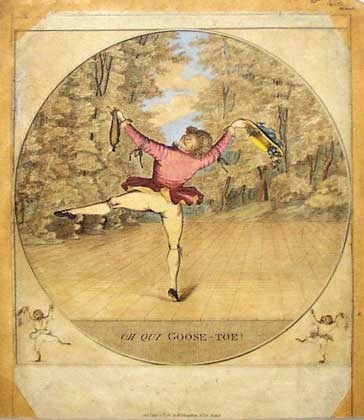
Ballet in the Age of Enlightenment.
Age of Enlightenment - one of the milestones in the development of ballet. Enlightenmentists called for a rejection of the conventions of classicism, for democratization and reform of the ballet theater. J. Weaver (1673-1760) and D. Rich (1691-1761) in London, F. Hilferding (1710-1768) and G. Angiolini (1731-1803) in Vienna together with the composer and opera reformer W. K. Gluck they tried to turn the ballet into a plot performance, similar to a dramatic one. This movement expressed itself most fully in the reform of the student L. Dupre Jean Georges Noverre.He introduced the concept of pas d'action (effective ballet). Noverre likened ballet to classicist drama and promoted a new attitude towards it as an independent performance. Attaching great importance to pantomime, he impoverished the vocabulary of dance. Nevertheless, his merit was the development of forms of solo and ensemble dance, the introduction of the form of multi-act ballet, the separation of ballet from opera, the differentiation of ballet into high and low genres - comic and tragic. He outlined his innovative ideas in"Letters on Dance and Ballets" "(1760). The most famous are Noverre's ballets on mythological subjects:,"Admet and Alceste","Rinaldo and Armida","Psyche and Cupid""The Death of Hercules" - all to the music of J. J. Rodolphe;, 1780,"Medea and Jason" 1778, "Chinese Ballet""Iphigenia in Aulis"
- all to the music of E. Miller, 1793. Noverre’s legacy includes 80 ballets, 24 opera ballets, 11 divertissements. Under him, the formation of ballet as an independent genre of theatrical art was completed.
Gioacchino Rossini composed his last operas for the Academy: Le Sieu de Corinthe, Moise et Pharaoh o passa de la Mer Rouge, Le Comte Ory and his monumental work Guillaume Tell. First performance of the Muet de Portici, composed for the Opera by Daniel-Françoise-Esprit Aubert with a libretto by Eugene Spies. Although now largely forgotten, the opera was a huge success at the time and played an important role in the emergence of the Grand Opera of France.
With their combination of Italian melody, Germanic harmony and rhythms, and the declamatory style of the French tradition, the works of Meyerbeer, as well as those of Rossini and Halévy, laid the foundations of French grand opera. Wagner imitated them before developing his own style, and Verdi never missed a premiere at the Paris Opera.
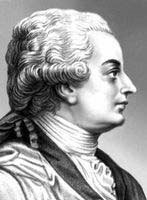
Jean Georges Noverre
Ballet sentimentalism. In the second half of the 18th century. The era of sentimentalism has arrived. Unlike the enlighteners, with sentimentalists made the character of their works an ordinary person , and not an ancient god or hero. The ballet theater became a public spectacle for the townspeople, and a new type of performance appeared - comedy and melodrama . In the foreground was pantomime, which, pushing dance into the shadows, turned ballet into choreodrama, and therefore increased interest in the literary basis of the action.
Paris became the center of the opera world, and all the great composers eagerly sought to have their works performed there. La Sylphide, created for the opera by Philip Taglioni, was the first ballet performed in white tutus. Dom Sebastian, Roy de Portugal, soon. The ballet, Giselle, Jean Coralli and Jules Perrot, marked the apogee of romantic ballet. Théophile Gautier, who wrote the libretto, used German mythology for the legend of deceased lovers who lure foolish travelers off the road, making them dance all the way to the gates of the Kingdom of Shadows.
Jean Dauberval, student of Noverre, virtuoso dancer of the Paris Opera, musical theaters of Stuttgart, Bordeaux and London, brought representatives of the third estate to the ballet stage for the first time in the famous pastoral ballet "Vain Precaution", 1789 (original title " Ballet about straw, or From bad to good, just one step"). In this performance Doberval managed to combine classical with pantomime and elements of folk and everyday dance.
This masterpiece in five acts, including a ballet, established France's Grand Opera as one of the major operatic genres of the 19th century. Giuseppe Verdi wrote his first great opera, Jerusalem, for the Académie Royale de Musique. The Emperor and his wife escaped from the miracle, but eight people were killed and nearly five hundred were injured in the explosion. The next day, the emperor decided to build a new opera house.
Organization of an international competition for the construction of a new Academy of Imperialism and Music. 171 architects took part, including thirty-five-year-old and as yet unknown Charles Garnier. His proposed design attempted to correct what he believed decisive problem for artists of that period: the impossibility of accommodating a large audience. He was declared the winner on May 30.
Jean Dauberval
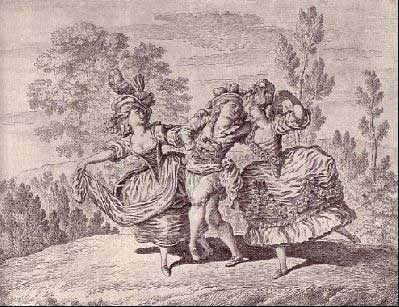
1779 artist Pierre Leroux.
If Dauberval became the creator of ballet comedy, then in his student, the chief choreographer of the Paris Opera, succeeded in the genre of melodrama Jean Omer(1774-1833), who staged famous ballet "Manon Lescaut"(1830) to music by J.F. Halévy. In the works of the younger generation of sentimentalists - S Alvatore Vigano (1769-1821), Pierre Gardel (1758-1840) , Charles-Louis Didelot The first signs of romanticism are noticeable: interest in heroic personalities and exotic subjects.
Richard Wagner made his entrance to the Opera against the backdrop of significant fiasco and financial losses: the first performance of Tannhäuser sparked a new battle between Hernani among the audience. Management responded to public pressure by canceling other actions; the composer hastily left Paris. And what! announced Baudelaire, taking up Wagner's defense: appeared new idea, and there was a mistake in the old building: it was important.
Artist and art critic Émile Perrin took over the leadership of the Paris Opera, a position he should have held before. The opera was forced to move to Sal Ventadur until the new Opera Garnier was completed. Inauguration of the new opera house. Charles Garnier's palace became the center of Paris, recently rebuilt by Georges Eugène Hausseman. No trees were planted on the avenue leading to the main entrance: passers-by enjoyed an unobstructed view of the façade, which was a glittering symbol of imperial power.
Charles Louis Didelot
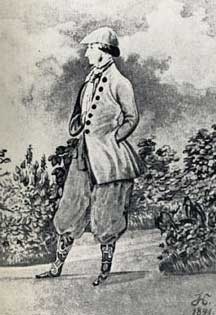
He became a theorist and teacher of emerging romanticism Carlo Blasis(1795-1878), in 1837-1850 he directed the Royal Academy of Dance at La Scala and wrote three books on the theory of classical dance, including a textbook "Terpsichore Code"
(1828), in which he developed a system of classical dance. Dividing the stage into classical (academic) and characteristic (everyday, folk), he identified in them the types of solo, ensemble and mass dance. His school became the leading school for the training of virtuoso style dancers; among his students were a galaxy of outstanding ballerinas of the Romantic era (C. Grisi, L. Gran, F. Cerrito). Working in St. Petersburg in the 1860s, he contributed to the formation of the Russian school of ballet.
When France entered World War I, Jacques Roucher became director of the Paris Opera, a position he held for over thirty years. He fell ill and was unable to complete the commission before his death. He recommended Sergei Lifar, also from the Ballet Russes, to replace him. IN next year Lifar became a choreographer, taking over the company to which he devoted more than thirty years of his life.
His neoclassical style greatly influenced Roland Petit and Maurice Béjart. At the age of nine, Roland Petit was accepted into the Opera Ballet School. He danced with the Ballet Company until he was twenty, when he retired to devote his time to choreography.
In the 1790sunder the influence of fashion, inspired by the imitation of antiquity, women's ballet costume became lighter, a heelless shoe appeared. With the development of finger technology pointe shoes were invented in the same years(from French. pointe- a point, special ballet shoes with a hard toe), with the help of which it acquired the character of flight. Ballerinas at the turn of the 18th and 19th centuries were the first to wear pointe shoes in the 1820s. Genevieve Goslin And Amalia Brugnoli. The French style of dance was distinguished by lightness and airiness, while the Italian style continued to develop dance virtuosity: jumps, spins. Pre-Romanticism prepared a qualitative shift in the art of ballet, a new ballet poetics. By the early 1830s, the contrasts between the sublime and the everyday base came to the fore, which would constitute the essence of romanticism. The female one took the leading roles.
Immediately after World War II, composer, conductor and music critic Reynaldo Hahn was appointed director of the Paris Opera. The moving story of a young newcomer who overcomes her fears and follows her Carmelite sisters to the guillotine met with immediate success.
Poulenc never invested so much time and effort into creating musical work as he did for this. Judging by the volume of the Palais Garnier, President François Mitterrand decided to build a new, modern opera house in Paris. Thirty-seven-year-old Uruguayan architect Carlos Ott won the contract to build a new opera house. After an exceptional international career as a dancer, Rudolf Nureyev became dance director at the Paris Opera.
Ballet of the Romantic era.
The criticism of the new way of life, outlined by the sentimentalists, took the form of a discord between dreams and reality among the romantics. to the real world they contrasted the world of fantasy and exoticism. Ballet romanticism achieved great success in France, where dance technique, especially for women, was high. P Philippe Taglioni became the first romantic choreographer, who staged the ballets " Sylphide"(1832) and "Virgin of the Danube"(1838) starring his daughter Maria Taglioni. Romantic choreographers were also Jean Coralli (1779-1854), Jules Perrault And Arthur Saint-Leon.
He left after six years but remained the company's primary choreographer. He was responsible for revivals and adaptations of Marius Petipa's ballets, including Don Quixote, Raymonda, Swan Lake, The Nutcracker and La Bayadère. Work has begun on the new opera house. The dance school moved to its current location in Nanterre.
He was to organize the inauguration ceremony of the Opéra Bastille. Inauguration of the Opéra Bastille as part of the bicentennial celebration of the French Revolution. The Palais Garnier and the Bastille Opera merge to form the Opéra de Paris. The Paris Opera became the National Opera of Paris. The name change indicated his intention to expand his reach beyond the capital.
Arthur Saint-Leon (1853)

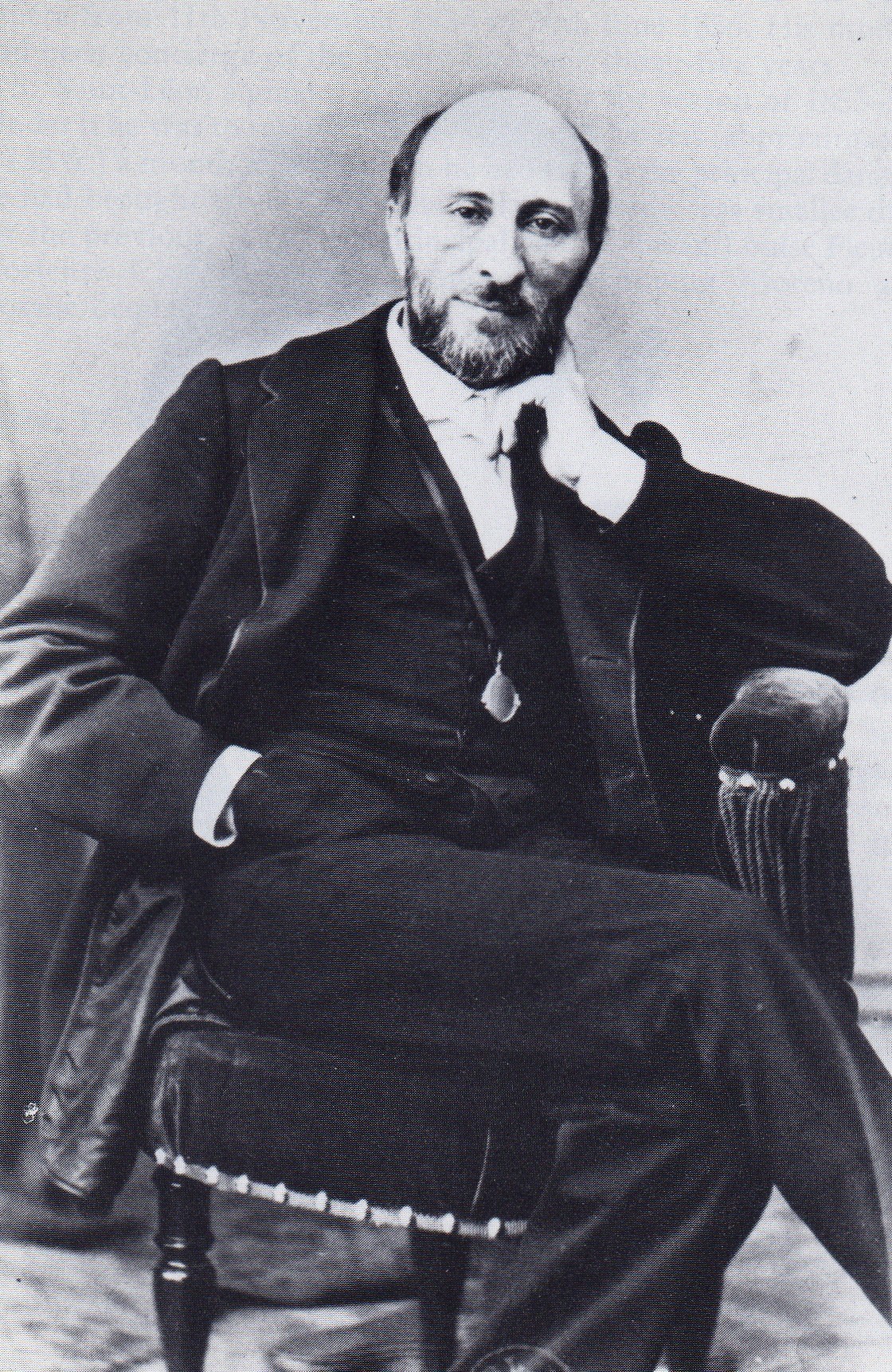
The heroines of the ballets were sylphs and forest spirits, Willis, characters from Celtic and German folklore . The image of a dancer in a white tunic, embodying an unearthly creature with a wreath on her head and wings behind her back, was invented by French costume designers I. Leconte, E. Lamy, P. Lormier. Later, the term “white”, “white tunic” ballet arose. White color- the color of the absolute, “white ballet” expressed a romantic longing for the ideal, the ballerina in an arabesque became its graphic formula. The role of the corps de ballet dance rose, and pantomime, solo, corps de ballet and ensemble dances merged into a single whole. Thanks to the development of finger technique, aerial movements became a new dance style.
Romantic ballet relied more on literary sources: "Esmeralda" 1844, after V. Hugo, "Corsair", 1856 by J. G. Byron, " Katarina, daughter of a robber", Ts.Puni, 1846. The role has increased music that has become author's, before, ballet music was often a collective, it served as the background and rhythmic accompaniment of the dance, creating the mood of the performance. The ballet music of romanticism itself created drama and gave imaginative musical characteristics to the characters.
The pinnacle of romantic ballet became "Giselle" (1841 ), staged at the Paris Opera J.Coralli And J.Perrault based on libretto by T. Gautier to music by A. Adam. IN "Giselle" the unity of music, pantomime and dance has been achieved. In addition to pantomime, the action of the performance was developed by musical and choreographic leitmotifs, and the intonation expressiveness of the melody gave the characters musical characteristics. Adam began the process of symphonizing ballet music, enriching it with an arsenal of expressive means inherent in symphonic music.
Galina Ulanova as Giselle (1940)
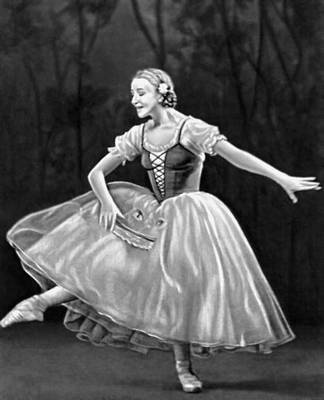
M. TaglioniAnd F. Elsler- the largest representatives and rivals of romantic ballet. Their individuality corresponds to two branches of romanticism: irrational (fantastic) and heroic-exotic. Italian Maria Taglioni represented the first direction, her La Sylphide became a symbol of romantic ballet, she was characterized by grace, flight and poetry. The Austrian ballerina Fanny Elsler was characterized by temperament, swiftness, and virtuosity; she represented the heroic-exotic direction of romantic ballet. Being a character dancer, she performed the Spanish cachucha, Polish Krakowiak, and Italian tarantella. Other outstanding romantic dancers: Carlotta Grisi, Fanny Cerrito (1817-1909),Lucille Gran (1819-1907). Grisi, first performer of the role of Giselle, She also became famous for her performance of the main role in the ballet Ts. Puni "Esmeralda". In 1845, Perrault composed the famous divertissement " Pas de Quatre"(music by Ts. Puni), where Taglioni, Elsler, Grisi, Cerrito performed simultaneously.
"Pas de Quatre" (1845)

Maria Taglioni
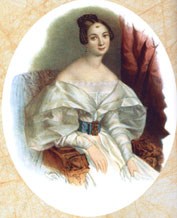
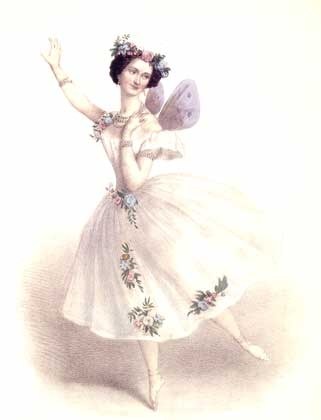
Fanny Elsler
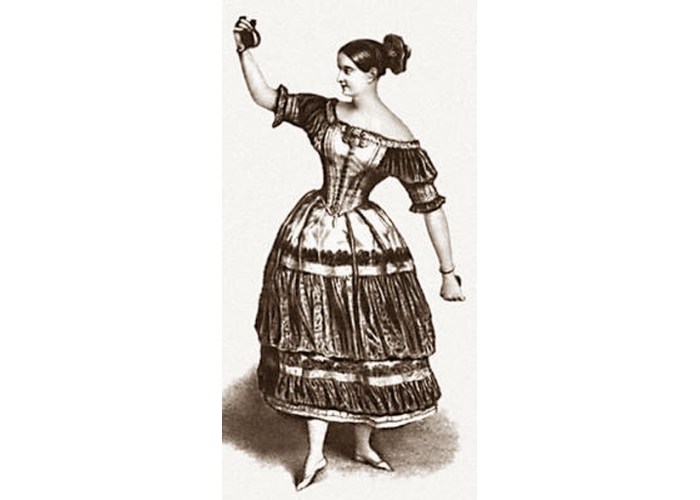
Carlotta Grisi
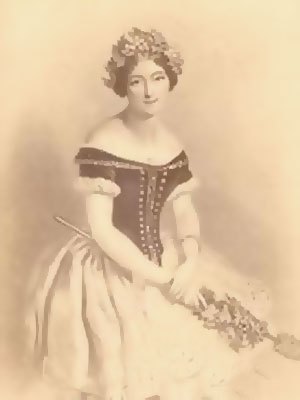
Its Danish branch stands apart in the history of ballet romanticism, especially in the works Augusta Bournonville. In 1836 he created his own version "La Sylphides" to music by H.S. Lowenskiöld. Danish romantic ballet (Biedermeier style against the backdrop of romanticism) is a more earthly and chamber style with folklore motifs, where pantomime plays a large role and more attention is paid to male dance, less use of finger technique, and female roles secondary. These features are also characteristic of the Danish ballet of the present time. In 1830, Bournoville headed the troupe of the Royal Copenhagen Theater and created many ballets over the course of 50 years. His male dance technique remains one of the leading in Europe.
August Bournonville
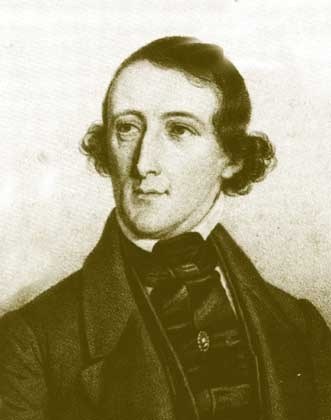
It is believed that the short period of romanticism was the best period in the entire history of European ballet. If Previously, the symbol of ballet was Terpsichore, then from the era of romanticism it became the sylph, the jeep. Ballet romanticism existed for the longest time in Russia (swan scenes in "Swan Lake" and snow flakes in "The Nutcracker" L. Ivanova, act of shadows in "La Bayadère","Pharaoh's Daughters" And "Raymonda" M.Petipa. At the turn of the 19th-20th centuries. Romanticism received a new birth in " Chopinians" M.M. Fokina. This was the romanticism of another era - the era of impressionism. The genre of romantic ballet continued into the second half of the 20th century. (" The leaves are withering" E. Tudor to the music of A. Dvorak, “ Dancing at parties" J. Robbins to the music of F. Chopin).
Ballet in the second half of the 19th century (academicism, impressionism, modernism).
When realism came to other forms of art, European ballet found itself in a state of crisis and decline. It lost its content and integrity and was supplanted by the extravaganza (Italy), music hall (England). In France, he moved into the phase of conservation of proven schemes and techniques. Only in Russia has ballet retained the character of creativity, where the aesthetics of grand ballet and academic ballet have developed - a monumental performance with complex dance compositions and virtuoso ensemble and solo parts. Creator of the aesthetics of academic ballet - Marius Petipa, French dancer, who came to Russia in 1847. Ballets created by him in collaboration with L.I. Ivanov (1834-1901) and composers P.I. Tchaikovsky and A.K. Glazunov "Sleeping Beauty"(1890), "Nutcracker" (1892), "Swan Lake" (1895), "Raymonda" (1898), "Seasons"(1900) became the pinnacle of classical symphonic ballet and moved the center of choreographic culture to Russia.
Plan:
- Introduction
- 1 Ballet in Italy
- 2 17th century - France and court dances
- 3 18th century - development as an art form
- 4 Pre-Romantic era
- 5
Ballet in the late 19th and early 20th centuries
- 5.1 Russia
- 5.2 USA
Introduction
Ballet is a type of performing art that includes a formalized form of dance.
1. Ballet in Italy
At the end of the Middle Ages, interest in ancient Greece arose, and this interest in the classical past led to the Renaissance. During the Renaissance, society began to focus on looking at individuals instead of society as a whole. As a result, during this period dancers came to be seen as perfect People.
The most remarkable improvements in choreography during the Renaissance took place in the city-states of what is now Italy. Ballet arose at the courts as a development of ceremonial performances that were staged during holidays for aristocrats. Court musicians and dancers collaborated to create entertainment for the nobility.
Renaissance ballet was much poorer than modern ballet. Tutus and pointe shoes have not yet been used. The choreography was adapted from the steps of court dances. The actors dressed in costumes according to the court fashion of the time. In early ballets, the audience also took part in dancing at the end.
Engraving of the first scene in Ballet Comique de la Reine.
In the 15th century there were only a few people who could be considered choreographers. Now we know only about those of them who wrote about dancing; the works of the rest were lost. Domenico da Piacenza (or Domenico da Ferrara) was one such choreographer. Together with his students Antonio Cornazzano and Guglielmo Ebreo, he taught dancing to the nobles. Domenico da Piacenza wrote one work De arte saltandi et choreus ducendi (About the art of dance and dance management), which was made together with his students. Domenico da Piacenza is probably the most famous choreographer of the era as he described much of what he did.
In his book Domenico used the word ballo instead of the word danza, although they both mean dance in Italian. Therefore his dances became known as baletti or balli(plural) balletto(units). It is likely that Domenico's word choice led to the use of the word "ballet" in its current sense. In 1489 in Tortone, Italy, during a celebration held by Bergonzio di Botta, a dance called entrée, began each part of the feast. Some see it as the first ballet.
In the 16th century there were grand performances called spectaculi, in northern Italy. They included not only dancing but also horse shows and battles. This is where the word came from spectacle, used in French when talking about ballet.
When Catherine de' Medici, an Italian aristocrat with an interest in the arts, married the heir to the French throne, Henry II, she brought her interest in dancing to France and provided financial support. The entertainment she organized pursued the goals of court politics and revolved around mythological themes.
Catherine de' Medici organized grandiose spectaculi on all kinds of events as the "Queen Mother" of France. One of the notable ones was Le Ballet des Polonais(Polish ballet), which was staged for the visit of Polish ambassadors in 1573.
Perhaps one of the first traditional ballets was Ballet Comique de la Reine(1581) staged by Balthasar de Beaujoyeulx, which was a ballet drama. It was watched by ten thousand spectators and lasted from 22:00 to 3:00. Then ballet included not only dancing. He was named baleto-comique (comique means "drama" and not "comedy") because it included elements of conversation and drama, which was also the reason why it lasted so long.
The same year publication Il Ballarino by Fabritio Caroso, a technical manual on court dances, both social and for performance, helped Italy become a center of technical development for ballet.
Ballet refined and became increasingly dance-based and less spoken-word over the next 50 years. He began to present himself not only in courtyards but also to spectators for a fee.
At this time, nobles, including Louis the 14th, performed roles of varying importance in the ballet. This raised the prestige of background roles and the roles of negative characters.
In 1584 appeared Teatro d'Olympico with proscenium in Verona, Italy.
The first French book about dancing appeared in 1588. Orchésographie by Thoinot Arbeau. It contained a description of turnout.
2. 17th century - France and court dances
Ballet developed as a separate art form, aimed at creating performances, in France during the reign of Louis 14th, who had a passion for dance and stopped the decline in dance standards that began in the 17th century.
When Louis the 14th was crowned king, his interest in dancing was strongly encouraged by the Italian-born Cardinal Mazarin, who assisted Louis the 14th. The young king made his debut in ballet as a boy.
Mazarin accelerated Italian influence on French performances. The choreographer he brought from Italy was the Italian composer Giovanni Baptista Lulli (1632-1687), named Jean-Baptiste Lully for work in France. Lully became one of the king's favorite dancers and represented the king as the best dancer in France.
Encouraged by Louis XIV, Lully often included the king in his ballets. The title "Sun King" of Louis 14th comes from his role in Le Ballet de la Nuit(1653) directed by Lully.
In 1661, Louis the 14th founded the Royal Academy of Dance (Académie Royale de Danse) in a room in the Louvre. It was the world's first ballet school. It developed into the company later known as the Paris Opera Ballet. Lully, who served at the French court, ruled the Royal Academy of Dance with an iron fist. He played an important role in determining the general direction of ballet for the next century.
Lully's main contribution to ballet was his attention to the nuances of compositions. His understanding of movement and dance allowed him to compose music specifically for ballets, with musical phrases corresponding to the physical movements. He also collaborated with the French playwright Moliere. Together, they took on the Italian theatrical style, commedia dell'arte(comedy of arts a), and adapted it in their works for French viewers, creating comedie-baleto. Among their most important creations was Le Bourgeois Gentilhomme(1670). Pierre Beauchamps (1636-1705), another court dancer and choreographer, also collaborated with them, staging dance interactions between dramatic movements. Pierre Beauchamp was the dance teacher of Louis the 14th.
Pierre Beauchamp began to create dance terminology. The earliest references to foot positions in ballet are in his works. Beauchamp may have been referred to as "Head of the Royal Ballets" at the Royal Academy of Dance. He is one of the most famous founding fathers of ballet.
The five leg positions and the turnout that is present in each position can also be explained by the fact that ballet was formed on the basis of court dances. The court dances were attended by nobles, and all the men among them were trained in fencing, and some fencing techniques were used in the dances. Turnout is also present in fencing, and the positions in ballet are similar to those in fencing. Turnout gives you the best opportunity to move in any direction.
The first ballet school was in France. Ballet terminology was formed there. Almost every movement in ballet is described with a French word or phrase. As a result of common terminology, every dancer must learn the French names for steps and movements. The advantage of this is that the dancer can take the lesson anywhere, and no matter how confusing the rest of the explanation is, the terms will be in French and therefore understandable.
In 1669, Louis the 14th founded the Royal Academy of Music (Académie Royale de Musique) for Lully to lead. In 1670 physical abilities Louis the 14th's performances deteriorated to such an extent that he stopped dancing, allowing other, better dancers to play the leading roles.
Later, Lully became the first director of the Royal Academy of Music's theater when it developed to include dance. Lully combined Italian and French ballets, creating a legacy that was to determine the future of ballet.
In 1672, Lully founded a dance academy at the Royal Academy of Music. This dance company still exists today as the Paris Opera Ballet. It is the oldest continuously operating ballet company in the world.
Lully's seriousness in studying dance led to the development of professional dancers, who became distinct from the mere courtiers who could dance. In addition, two different styles appeared in ballet dancing - majestic, noble, characteristic of court ballet, and virtuosic, previously possible only with professional actors.
Until 1681, only men participated in the ballet. In 1681, Lully staged Le Triomphe de l'Amour. Mademoiselle de Lafontaine (Mlle LaFontaine), (1665-1738) was one of four dancers who participated in the performance. The names of the other three are currently unknown. From this time on, Mlle Lafontaine began to be known as the "Queen of Dancing". Mlle Lafontaine was the first woman to be a professional dancer. Louis Pécourt (1655-1729) was the first leading male professional dancer.
In 1687, Lully received a wound from a stick accidentally stuck into his leg, which was used to mark the time, and because of this he died. At this time, ballet was usually performed as part of the same theatrical productions as opera, in the form of a performance called opera-ballet ( opera-ballet). The Academy of Music, which Lully directed, created the standard of opera-ballet. People wanted dancing as much or more than music. Composer of one of the opera-ballets, L'Europe Galante(1697), proposed to make it more popular by lengthening the dances and shortening the dancers' skirts, which were already quite common at that time.
3. 18th century - development as an art form
Maria Taglioni, the first to dance on her toes.
The composition of the ballet was changed by some composers, for example Christoph Gluck. Eventually ballet was divided into three formal techniques serieux(serious), demi-caractère(semi-character) and comique(comic). Ballet began to be perceived in operas as intermediate connecting performances.
A book was published in 1700 Choréographie, ou l'art de décrire la danse by Raoul Auger Feuillet. Word choreography the title of the book comes from the Greek khorea(dance) and graphein(write). The word “choreography” comes from this word. This book described both stage dances and dances for the dance floor. It attempted to create a way to record dances similar to recording music. Although this method of recording was never completed or standardized, this system is still used today, since no other system has been developed. By 1700, many of the now commonly used words to describe ballet movements were already in use, e.g. cabriole, chasse, entrechat(entrechat), jeté, pirouette(pirouette), sissone.
In 1713, the Paris Opera founded its own dance school, which taught dance techniques based on the works of Feuillet. In 1713, the Royal Academy of Dance was annexed to the Paris Opera.
A book was published in 1725 Dance Master by Pierre Rameau (1674-1748), former dance director to the Queen of Spain. In this book, Rameau formally gives five foot positions for the first time.
At this time, French dancers paid attention to elegance and Italian dancers to acrobatics. In France, in the dance parts of the opera-ballet the story continued, while in Italy dances were inserted simply so that the audience did not listen to continuous singing for too long.
Some of the outstanding male dancers of their time were Michel Blondy (1677-1747) and Claude Balon (1676-1739). The latter's surname may have given the term ballon, describing the quality of jumps in ballet. Women still played a less important role in ballet than men, since they started dancing later and had to wear heavy costumes. Some of the outstanding women dancers were Marie-Thérèse de Subligny (1666-1735) and Françoise Prévost (1680-1741); They became known as the French dancing queens, as they reached their maximum capabilities and danced similar to Blondy and Balon.
Prévost began to claim fame by staging solos Les charactès de la Danse representing several romances where she played both sides. Two of her students, Marie Sallé (1701-1756) and Marie-Anne de Cupis de Carmargo (1710-1770), or La Carmargo as she was known, performed this production. Marie Carmargo debuted in 1726. Her competitor Marie Sallé debuted in 1727. In 1733 Marie Sallé created her own Pygmalion, wearing only a tunic.
Carmargo performed pure dancing. In solo, she concentrated on jumping and developing steps with many kicks batterie. Sallé became famous for her incredible ability to show character. So she transformed her teacher's solo into a duet, which gave her the opportunity to interact with her partner. Both La Carmargo and Sallé contributed to the shortening of the ballerina's costume, as they performed in shorter skirts, but they were, however, barely above the ankle. In their shorter skirts, ballerinas had to wear calçons de précaution (précaution means “to prevent”, “to take care”) so that the audience does not see anything inappropriate, as was believed in that era.
In 1735 Pierre Rameau staged an opera-ballet Les Indes Galantes, based on the theme of four romances in different exotic situations. In it, the dancers are certainly performing ballet, since dances for the ballet and the dance floor are already recognized as different from each other. Eversion is considered as an important part ballet, ballet then required almost complete (180 degrees) turning. Although turnout was desirable in dancing on the dance floor, in reality it was not at all necessary in this case.
In 1738, Jean-Baptiste Landé founded the Imperial Ballet School in St. Petersburg, Russia, now known as the Academy of Russian Ballet. A. Ya. Vaganova. This is the second oldest ballet academy in the world.
In 1739, Barbara Campanini (1721-1799) came from Italy to Paris and became widely known as La Barbarina. While La Carmargo was doing great entrechat-quatre, a jump in which the legs cross or hit each other twice, La Barbarina could do entrechat-huit, a four-kick jump.
After about 1735, much greater attention to ballet began to appear in England. Then the English choreographer John Weaver (1673-1760) created ballet d'action(action ballet), that is, ballet without talking. The whole story was conveyed in it with the help of dances and pantomime. His most ambitious project was Love of Mars and Venus, which featured Louis Dupré (1697-1774), John Weaver and England's first ballerina, Hester Santlow (1690-1773). Although Love of Mars and Venus was well reviewed, it was forgotten and Weaver did not receive the recognition he deserved. Action ballet would probably die with Weaver. However, the Italian Domenico Maria Gasparo Angiolili (1731-1803) and the French-Swiss Jean-Georges Noverre (1727-1810), a student of Louis Dupré, called the "Shakespeare of the Ballet", grasped the idea of action ballet for themselves .
In 1758, Jean Georges Noverre staged his first ballet in Lyon and wrote his theories about dance. In 1760 he published his book Lettres sur la danse et les ballets (Letters about dance and ballets), which concentrated on developing an action ballet in which the movements of the dancers were designed to express meaning and convey a story. This seminal book was important in establishing the 18th century as a period of refinement in ballet's technical standards and a period in which ballet became a serious dramatic art form alongside opera. To make everything that happens on stage as truthful as possible, Noverre chose pantomime as his main method.
By the mid-18th century, many monarchist courts in Europe were trying to be like Versailles. Opera houses opened in different places. Dancers and teachers easily found work.
At this time, women played a supporting role as dancers, as they were dressed in crinolines, corsets, wigs and wore high heels. In such costumes worn by ballerinas of that era, it was difficult for them to dance, and since they wore leather masks, it was difficult for them to act. Noverre contributed to changing the traditional costume of ballerinas and in 1763 he staged Jason and Medea no masks. The expressions on the dancers' faces were visible, and the enormous expressiveness of the performance sometimes greatly impressed the audience.
In 1772 Maximilien Gardel stopped using his mask.
In 1780, John Durang, the first American male dancer, performed in Philadelphia (Pennsylvania, USA).
In 1783, Catherine II created the Imperial Opera and Ballet Theater in St. Petersburg, along with the opening of the Bolshoi Kamenny Theater building.
In the second half of the 18th century, the Paris Opera was dominated by male dancers, such as the Italian-French virtuoso Gaëtan Vestris, a student of Louis Dupré, and his son Auguste Vestris, famous for his jumping. But women also improved ballet technique, for example, German-born Anne Heinel, the first female dancer to perform a double pirouette.
In 1789 Le Ballet de la Paille was staged in Bordeaux by one of the ballerinas of the time, Maria-Madeleine de Crespé (1760-1796), and her husband Jean Dauberval (1742-1806) (choreography). Jean Dauberval was a student of Jean Georges Noverre. Le Ballet de la Paille was one of the first ballets about middle-class people. He talked about a mother trying to arrange a profitable marriage for her daughter. This ballet is now known as La Fille Mal Gardee. This is the oldest ballet in the modern repertoire.
At this time, the French Revolution began, which is why Dauberval remained in Bordeaux. There he taught Italian-born and trained Salvatore Viganò (1769-1821) and his wife. Besides the fact that Viganò was ballet dancer, he was also a well-received musician, poet and actor. It was said that his theatrical genius was on the same level as Shakespeare's. Beethoven composed his only ballet music for Viganò Creations of Prometheus.
Along with the French Revolution came a revolution in ballet styles, as can be seen from the drawings of Viganò and his wife. Viganò's costumes were much lighter than the previous ones. His wife wore light, flowing costumes with necklines similar to the French imperial line, and both dancers wore soft, flexible shoes. The use of heeled shoes in ballet ceased in the 1790s. For men, tight-fitting knee-length pants and stockings made it possible to see the dancer's figure. Lighter clothing made it easier to perform pirouettes and jumping movements.
In 1791, the first American ballet company performs in Charleston, South Carolina, USA.
4. Pre-Romantic era
At the beginning of the 19th century, ballet was in a transitional phase of development called pre-romantic. During the pre-Romantic era, male dancers reached their peak.
The Italian choreographer Carlo Blasis (1797 (according to some sources 1795 or 1803) - 1878), one of Vigano's students, taught the next generation of dancers so that they would advance compared to the previous generation, and he published his results in textbooks in Italy and then in England, describing the finer details of ballet. In 1820 Carlo Blasis wrote An Elementary Treatise on the Theory and Practice of the Art of Dance. Dance technique of the early 19th century was described in his Terpsichore Code(1830). He is believed to be the inventor of the pose attitude, based on the famous work of the Flemish sculptor Giambologna, a statue of the god Mercury easily balancing on the toes of his left foot.
In the pre-Romantic era of ballet, dancers first began dancing on the tips of their toes. The earliest depiction of a woman dancing on her fingers is in the image of Fanny Bias on her fingers in 1821, and it is possible that Geneviève Gosselin danced on her fingers in 1815. However, the dancer who is traditionally regarded as the first to dance on her fingers is the Italian Marie Taglioni (1804-1884), who is believed to have been on her fingers at the age of 18. However, before her, standing on fingers was just a trick, but for her it was a means of expression in art.
In 1828, Maria Taglioni made her debut at the Paris Opera.
5. Ballet in the late 19th and early 20th centuries
The 19th century was a period of great change in society, and this was reflected in ballet, with a shift away from the aristocratic powers of perception that had previously dominated, towards romantic ballet.
Romanticism was a reaction against the formal restrictions and mechanics of industrialization. The wisdom of the era led choreographers to create romantic ballets that were light, airy and free, which was meant to be a contrast to the reductionist science that, in Poe's words, "brought the dryads out of the woods." These seemingly unreal ballets presented women as delicate, ethereal, airy creatures who could be lifted without difficulty and appear almost floating in the air. Ballerinas began to wear costumes in pastel colors, with skirts floating around their legs. The scripts were on the theme of terrible folk spirits.
Ballerinas Geneviève Gosselin, Maria Taglioni and Fanny Elssler experimented with new techniques such as finger dancing, which gave increased height as an ideal stage figure. Professional librettists wrote stories for ballets. Teachers such as Carlo Blasis described ballet technique in the basic form that is still used today. Pointe shoes were invented to support finger dancing.
In 1832, Filippo Taglioni (1777-1871), Maria Taglioni's father, staged the ballet La Sylphide for her to fulfill it. Maria Taglioni danced the role of Sylphide, a supernatural being who was loved by a corporeal man and was inadvertently destroyed by him. The choreography used finger dancing to emphasize the supernatural brightness and insubstantiality. La Sylphide caused many changes in the era's ballets in theme, style, technique and costumes. IN La Sylphide Maria Taglioni wore a bell-shaped suit with a whalebone bodice. On this basis, 50 years later, a romantic ballet skirt was designed.
La Sylphide began the Romantic period, it is one of the most important ballets and is one of the older ballets still performed today.
The romantic era more or less began with the production Giselle, ou Les Wilis(or simply Giselle - Giselle) at the Paris Opera in 1841, choreography by Jean Coralli and Jules Perrot (1810-1892). The music was composed by Adolphe Adam. The role of Giselle was played by Carlotta Grisi (1819-1899), a new ballerina from Italy. IN Giselle there was a contrast between the human and supernatural worlds, and in its second act the spirit-ghosts called wilita, were dressed in white skirts, popularized in La Sylphide. Romantic ballet was not limited to supernatural beings, however.
In 1845, at Her Highness's Theater in London, Jules Perrot staged Pas de Quatre.
As the relatively new skill of finger dancing improved, female dancers became increasingly prominent during the Romantic era. Only a few men were prominent in ballet at that time. Some of them were Jules Perrot, the choreographer who staged Pas de Quatre, Lucien Petipa (1815-1898) who knew how to be a virtuoso partner, Arthur Saint Léon (1821-1870) who was not only an excellent dancer, but also an excellent cellist.
In Russia and Denmark, however, men were trained alongside women, while ballet in these countries was supported by monarchical courts. The Dane who left the most significant mark on ballet was Auguste Bournonville. After studying in Denmark and Paris, after dancing at the Paris Opera, August Bournonville returned to Denmark. There in 1836 he staged his version La Sylphide, with new choreography and new music; 16-year-old Lucille Grahn played the role of Sylphide.
5.1. Russia
While France was successful in early ballet, other countries and cultures soon adapted the art form for themselves, most notably Russia. Russia has a recognized tradition of ballet, and Russian ballet plays a prominent role in the history of this country.
After 1850, ballet began to fade away in Paris. Ballet was still popular, but it was seen mainly as a performance beautiful women. In London, ballet practically disappeared from the stages of opera houses and moved to the stage.
But ballet flourished in Russia and Denmark thanks to the masters August Bournonville, Jules Perrot, Arthur Saint-Léon, Enrico Cecchetti and Marius Petipa (1818-1910) (brother of Lucien Petipa). At the end of the 19th century, Orientalism was in vogue. Colonial policies provided knowledge about Asian and African cultures, but they were distorted by error and imagination. The East has often been seen as a faraway place where anything is possible, as if it were lavish, exotic and decadent.
Before this, France had imported many talents from Italy for several centuries. Likewise, Russia imported dancers from France. Previously, Russia’s own dancers performed in front of audiences in St. Petersburg. One of the most notable dancers was Maria Danilova, who was an excellent finger dancer and was remembered as the “Russian Taglioni.” She died at the age of 17 in 1810.
In 1842, Christian Johansson (1817-1903) accompanied Maria Taglioni to Russia and stayed there, later becoming one of the most prominent teachers in Russia.
Giselle was first performed in Russia a year after its premiere in Paris with Elena Andreyanova (1819-1857) in the role of Giselle. She danced with Christian Johansson and Marius Petipa, two of the most important figures in Russian ballet.
In 1848, Fanny Elssler and Jules Perrot came to Russia. Perrot remained there for 10 years as director of the St. Petersburg Imperial Russian Ballet (now the Mariinsky Ballet Company).
In 1852, Lev Ivanov (1834-1901), the first Russian-born innovator, graduated from the Imperial Ballet School (now the Vaganova Academy of Russian Ballet).
In 1859, Arthur Saint-Leon became the director of the St. Petersburg Imperial Russian Ballet (now the Mariinsky Ballet Company) instead of Jules Perrot.
Marius Petipa was still the leading dancer of the St. Petersburg ballet in 1862 when he created his first multi-act ballet Pharaoh's Daughter for the Tsar's Imperial Theater. It was an incredible fantasy with Egyptian themes, with mummies coming to life and poisonous snakes. This ballet led to other ballets and perhaps to what is now considered classical ballet.
In 1869, Marius Petipa became the chief director of the St. Petersburg Imperial Russian Ballet (now the Mariinsky Ballet Company) instead of Arthur Saint-Leon and was its dictator for the next 30 years. Petipa created many ballets of one act and several acts for production on the imperial stages of Russia. In 1869 he went to Moscow and staged a ballet there Don Quixote for the Bolshoi Theater in Moscow.
Then Arthur Saint-Leon returned to Paris and staged Coppelia, last big ballet Paris Opera. The Franco-Prussian War and the Siege of Paris led to the death of ballet in Western Europe.
In 1877 Petipa created the ballet La Bayadère for the Bolshoi Theater in St. Petersburg.
The first production took place in 1877 Swan Lake, a ballet so popular that its title is a representation of classical ballet. Swan Lake with the first music of Pyotr Ilyich Tchaikovsky, he was the first of the big three of Russian ballet. Originally created by the Austrian Wenzel Reisinger (1827-1892), Swan Lake was revised by many, among them Joseph Hansen (1842-1907), and Petipa in 1895.
In the 1880s, Petipa staged two ballets in Russia that were very successful in Paris. The first one was Giselle, second - Coppélia directed by Saint-Léon (the original production was in 1870).
In 1889 Petipa created the ballet Amulet.
In 1890, Enrico Cecchetti (1850-1928) became a dancer and director of the Imperial Ballet School. He was born in Rome, both of his parents were dancers and he studied with them. He also studied with Giovanni Lepri, a student of Carlo Blasis.
In 1890, the Italian ballerina Carlotta Brianza (1867-1930) was chosen by Petipa for the role in the new ballet The Sleeping Beauty). This ballet is the second in the big three and one of the main classical ballets.
In 1892 (although the year remains an open question for historians), Petipa, designer Ivan Vsevolzhsky and second director Lev Ivanov created the ballet Nutcracker. This is the third ballet of the big three. It is based on a sweetened French retelling of the story by E. T. A. Hoffmann. Nutcracker is extremely popular in hundreds of different versions as Christmas ballet. Premiere Nutcracker was at the Mariinsky Theater on December 18 (December 6 according to the Julian calendar then used in Russia) 1892.
Petipa is best known for his collaborations with Pyotr Ilyich Tchaikovsky. Petipa used Tchaikovsky's music for his dances in The Nutcracker (1892), Sleeping Beauty(1890), in final revision Swan Lake(1895, with Lev Ivanov). All of these works are based on European folklore.
In the 1890s, ballet ceased to be a great art in Western Europe and did not exist in America. Three men, all from Russia but not all Russians, appeared on the stage at approximately the same time and created a new interest in ballet throughout Europe and America: Enrico Cecchetti, Sergei Diaghilev (1872-1929) and Agrippina Vaganova (1879-1951).
The classic tutu began to appear at this time. It consisted of a short skirt supported by layers of crinoline or tulle, and allowed the legs to perform acrobatics.
In 1895 Petipa remade Swan Lake incorporating important choreographic additions. One of the additions was 32 fouette turns.
In 1898, Petipa staged his last ballet using all remaining possibilities. Raymonda there was a ballet in three acts with music by Alexander Glazunov. Similar in style to Tchaikovsky's ballets, Raymonda was very difficult to perform as it had a wide variety of dances, more than can be seen from the graphic line of the performance.
At the beginning of the 20th century, people began to tire of the ideas and principles of Petipa's ballets and were looking for fresh ideas. Russian ballet was already more famous than the French one and many Russian dancers had international fame. Probably the most notable ballerina of the time was Anna Pavlova (1881-1931), famous for her performance Dying Swan (1907).
In 1907, Mikhail Fokin began trying to change the rules regarding costumes at the Imperial Theater. He felt that the view open umbrella, the way women dressed then was boring and not decent. In my ballet Greek style Eunice he made the dancers appear barefoot. It was then against the rules of the Imperial Theater to have bare feet, so toes were painted on the dancers' shoes. In addition, he used serious music instead of dance music.
In 1909, Sergei Diaghilev brought ballet back to Paris, opening his company Ballets Russes. Among the Ballets Russes dancers were the best young Russian dancers - Anna Pavlova, Tamara Krasavina, Adolf Bolm (1884-1951), Vaslav Nijinsky (1889-1950), Vera Caralli. The Ballet Russes opened in Paris on May 19, 1909 and were an immediate success. Male dancers, among them Vaslav Nijinsky, deserve special admiration, since good male Togla dancers have practically disappeared in Paris. After the Russian Revolution of 1917, the company consisted of emigrants from Russia. The revolution deprived Diaghilev of the opportunity to return to Russia.
Ballets Russes performed mostly in Western Europe, but occasionally in North and South America. For 20 years Sergei Diaghilev was the director of all ballet in Western Europe and America.
After one season with the Ballets Russes, Anna Pavlova founded her own company, which was based in London and traveled extensively around the world, visiting places where the Ballets Russes did not come. Anna Pavlova visited many cities in the USA, including small ones. She did not found a ballet school or company in the United States, but through her performances she encouraged many girls to take up dancing.
Ballets Russes started with strong Russian iconic works. However, the first ballet shown was Le Pavillon d'Armide had a strong French influence. In performance Le Pavillon d'Armide Vaslav Nijinsky, known as one of the best jumpers of all time, participated in both St. Petersburg and Paris. Ballets Russes presented in Paris also the ballet formerly known as Chopiniana, since all the music belonged to Chopin. But it was renamed Les Sylphides for French viewers. He was not the same as La Sylphide, but it was given a similar name since Parisian spectators had recently seen La Sylphide.
Diaghilev and composer Igor Stravinsky combined their talents to create ballets based on Russian folklore Firebird And Parsley. Over the next few years, Ballets Russes performed several ballets that thus became famous, among them Scheherazade (1910), Firebird (1910), Parsley (Petroucha) (1911).
Mikhail Fokin began his career in St. Petersburg and then moved to Paris and worked with Diaghilev at the Ballets Russes.
Enrico Cecchetti was one of the performers of Petrushka, playing pantomime since he was already not in very good physical shape. Enrico Cecchetti became famous for his roles as the fiery fairy Carbosse and bluebird in Sleeping Beauty Petipa's 1890 productions. Afterwards he became known as the creator of Cecchetti's way of teaching ballet.
In 1913, Nijinsky created a new ballet Le Sacre du Printemps (Russian name Sacred spring, although the literal translation from French is “Dedication to Spring”). This was the most controversial work of the Ballets Russes. This ballet was staged with music also called Stravinsky. Modern ballet music and the theme of human sacrifice greatly impress the audience. Many in the USA associate Spell of Spring with the dinosaur episode from Fantasia Walt Disney.
The last important production of the Ballets Russes in Paris was in 1921 and 1922, when Diaghilev restaged the version Sleeping Beauty Petipa 1890. Its show for four months did not return the financial investment, and it was actually a failure. However, Sleeping Beauty restored the audience's interest in the evening-long ballet.
In 1933, after Diaghilev's death, René Blum and others founded the Ballet Russe in Monte Carlo and continued to carry on the ballet tradition. Blum was later killed at Auschwitz by the Nazis.
After the Russian Revolution, ballet in Russia was preserved by Anatoly Lunacharsky, the first People's Commissar of Education. After Lunacharsky, the commissioners allowed ballet if it was bright and sublime.
Russian ballet continued its development during the Soviet era. After the revolution, the country remained a small amount of talented people, but this was enough to create a new generation. After stagnating in the 1920s, a new generation of dancers and choreographers appeared on the stage in the mid-1930s.
In the 1930s in St. Petersburg (then Leningrad), Agrippina Vaganova was the artistic director of what was previously called the Imperial Russian Ballet, and began to leave traces of her activities. In 1935, the ballet company was renamed the Kirov Ballet (now the Mariinsky Theater Ballet Company). As artistic director, Vaganova followed government rules and changed the end Swan Lake from tragic to sublime.
Vaganova demanded technical perfection and precision of dance, she was a student of Petipa and Cecchetti and had previously directed the Imperial Ballet School, renamed the Leningrad State Choreographic Institute, which trained dancers for the Mariinsky Ballet Company. In 1957, six years after Vaganova's death, the government renamed the Leningrad State Choreographic Institute into the Academy of Russian Ballet. A. Ya. Vaganova. When the Mariinsky Ballet Company began traveling to Western Europe, Vaganova had already died. Vaganova’s method of teaching ballet is known from her book “Fundamentals of Classical Dance,” which has been translated into various languages.
The ballet was popular with the public. And the Moscow ballet company Bolshoi Theater and the St. Petersburg Ballet Company of the Mariinsky Theater were active. Ideological pressure led to the creation of socialist realist ballets, most of which did not impress the public and were later excluded from the repertoire of both companies.
Some works of this era, however, were notable. Among them - Romeo and Juliet Sergei Prokofiev and Leonid Lavrovsky. Ballet Flame of Paris, although it has all the characteristic features of the art of socialist realism, was the first to actively use the corps de ballet in the performance. The ballet version was also successful Bakhchisarai fountain based on the poem by Alexander Pushkin with music by Boris Asafiev and choreography by Rostislav Zakharov.
Famous ballet Cinderella with music by Prokofiev is also a product of Soviet ballet. During the Soviet era, these productions were largely unknown outside the Soviet Union and later the Eastern Bloc. After the collapse of the Soviet Union they became more famous.
5.2. USA
After the Ballets Russes appeared in France, the ballet gained greater influence, especially in the United States.
In 1910, the first ballet company in America, the Chicago Opera Ballet, was founded.
In 1929, the Aleksander Dorothy Concert Group appeared, which later became the Atlanta Civic Ballet.
In 1933, Adolph Bolm founded the San Francisco Ballet.
From Paris, after disagreements with Diaghilev, Fokine moved to Sweden and then to the USA and finally settled in New York. He believed that traditional ballet was little more than a pretty athletic performance. For Fokin this was not enough. In addition to technical skill, he demanded drama, expressiveness and historicity. In his opinion, the choreographer should research the era in which the ballet is staged and its culture, and abandon the traditional tutu in favor of a costume appropriate to the era.
Fokin delivered Scheherazade And Cleopatra. He also redesigned Parsley And Firebird. One of his most famous works was Dying Swan performed by Anna Pavlova. In addition to her talents as a ballerina, Pavlova had the theatrical ability to match Fokine's vision of ballet as drama.
A young dancer and choreographer with the Ballets Russes was Georgy Melitonovich Balanchivadze (1904-1983), whose name was later changed into French as George Balanchine. He staged several works at the Ballets Russes, most famously Apollon Musagete(later Apollon) (1928), a classic work of neoclassicism. It was a one-act ballet in the Greek style. After Diaghilev's death, Balanchivadze left the Ballets Russes, traveled alone for a short time, eventually becoming the head of the Ballets 1933 company, which, however, soon closed. Lincoln Kirstein (1907-1995) invited Balanchivadze to America. Kirstein knew almost nothing about ballets, and Balanchivadze knew almost nothing about America, except that women who look like Ginger Rogers appear there. Balanchivadze decided to accept the offer and found a ballet in America. Then Kirstein began to list ballets that he would like to see in America, the first item on the list was Pocahontas.
In 1933 or 1934, Kirstein and Balanchivadze founded the School of American Ballet in Hartford, Conneticut, which gave its first performance, a new production entitled Serenade, the same year. Balanchivadze developed an exemplary technique in the USA, founding a school in Chicago. In 1934, the School of American Ballet moved to New York, which was more important. Balanchivadze adapted the ballet to new media, films and television. A productive worker, Balanchivadze remade classic Swan Lake And sleeping Beauty and also created new ballets. He created original interpretations of Shakespeare's dramas - Romeo and Juliet, Joyful widower, A dream in a summer night. In ballet Jewelry Balanchivadze broke the tradition of the story and dramatized the theme instead of graphic representation.
Barbara Karinska, an emigrant from Russia, was a capable tailor and collaborated with Balanchivadze. She elevated the role of costume design from a supporting role to an important part of a ballet performance. She introduced a bias hem and simplified the classic ballet skirt, giving dancers additional freedom of movement. With scrupulous attention to detail, she decorated skirts with beads, embroidery, and appliqué.
, American Ballet Theater , American Ballet Theatre.








